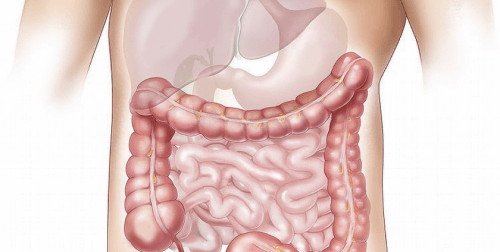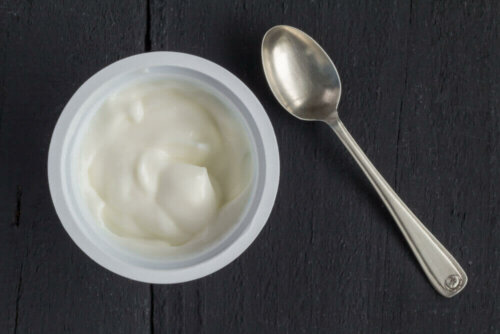Twelve Symptoms of Damaged Intestinal Flora


Written and verified by the doctor Nelton Abdon Ramos Rojas
Sometimes, you might have some discomfort that may indicate that you have damaged intestinal flora. Nausea, heaviness, flatulence, pain in the abdominal area (both generalized and in specific places), etc. Have you experienced them? Do you know what you should do?
In addition to calling the doctor to schedule a consultation, it’s important you consider the following. It will be useful for you so the problem doesn’t get worse, whatever it is.
Your “flora” is your intestinal microbiota
In general, scientists use the term “intestinal flora” to refer to the millions of microorganisms that live in the gut in a symbiotic relationship.

These microorganisms can be mold, yeast, bacteria, and even viruses. But don’t let this shock you. These bacteria, far from being harmful, give you a large number of benefits. Their balance directly affects the body’s health.
Before we continue, it’s important to mention that experts at the Navarra University Clinic recommend that people stop using the term “flora,” because that refers to plants and microorganisms of the protist kingdom. Instead, they suggest using the term “intestinal microbiota.”
Science educator and biomedicine expert, Sandra Ortonobes, clarifies that these microorganisms live in your body in a balanced condition. When that balance is upset, it can trigger sicknesses.
Your intestine: the home of billions of bacteria
Even though it’s difficult to believe, the gastrointestinal mucosa in adults can reach a surface area of 3,000 to 4,000 square feet. That’s where the incredibly large population of microbes live: 100 billion bacteria, from 500 to 1000 different species.
Your intestine relies on a complex structure with different functions. The goal of it is to recognize and absorb the substances that you introduce to your body through food.
In other words, the human intestine is a great bridge between the external and internal environments. This is because it carries out two important functions:
- Nutrition: It processes foods through digestion and absorbs the nutrients to sustain and strengthen your body.
- Defense: Your intestinal structure, just like it happens with sensors, recognizes external elements that are benign or malignant to your body. If it recognizes them as nutrients, it absorbs them. But, if it detects an attack, it activates its defense and rejection systems to defend your body.
You might enjoy: Are There Bacteria in the Lungs?
Functions of your intestinal flora
The microbiota or intestinal flora has several functions. In fact, it plays an essential role in the development of the immune system. In addition, it determines the development of problems such as allergies, intestinal diseases, cancer, diabetes, and obesity.
Let’s look at some of its functions, according to the types of microorganisms that compose it:
- Metabolic: The flora absorbs the substrate through a large number of enzymes. Furthermore, this helps you get energy for your diet and encourages the absorption of calcium, magnesium, and iron.
- Protective: Among other benefits, micro-flora are defensive. In your intestines, they make a barrier that slows the growth of harmful or foreign bacteria.
- Trophic: Gastrointestinal bacteria control the growth and differentiation in a number of cells that cover your internal cavities, organs, and other tissues.
What are some of the symptoms of damaged intestinal flora?

The following are the most important signs of damaged intestinal flora. Of course, identifying these symptoms isn’t enough to make a diagnosis, which is why you should visit your doctor for a full evaluation.
- White tongue
- Constipation
- Frequent diarrhea
- Abdominal bloating
- Food intolerances
- Irritable bowel syndrome
- Pain in your joints
- Gas, flatulence
- Increases in infections
- Bad smelling odors coming from feces
- Abdominal pain, cramps, and intestinal pain
- Digestive and intestinal problems
Once the doctor makes their diagnosis, it’s crucial that you follow their instructions. At the same time, you should try to improve your habits, including what you eat.
What do you need to do to protect this microbiota?
So that the microbiota is in a good state, it’s vital to follow certain steps like the ones below:
- Eat foods in clean places
- Cook food correctly
- Wash foods before eating them
- Follow a diet that’s rich in fiber, and one that includes whole cereals, vegetables, and fiber
- Don’t abuse sugar or refined carbohydrates
- It’s wise to eat slowly with pauses, chewing your food so that you process it well
- Eat foods like yogurt, dairy, lactobacillus, probiotics, and prebiotics. This is because they contain live bacteria. They also encourage the growth of good bacteria.
- Reduce your intake of animal fats
- Be careful with medical treatments that use antibiotics. This is because they eliminate bacteria indiscriminately.
Read more: Can Food Be Contaminated by Coronavirus?
Factors that hurt the microflora in your intestine
Below, we’ll share with you a shortlist of the most common factors of damaged intestinal flora. This way you can identify, avoid, and prevent them.
- Chronic stress
- Smoking
- Alcoholism
- Chemically based laxatives
- Digestive diseases
- Certain medications
- Finally, a deficient diet high in fat, meats, and refined sugars
What are the recommended foods?
Among the best foods, we find the following:
- Honey
- Cheese
- Yogurt
- Oats
- Goat cheese
- Lean proteins
- Ginger root
- Ginger is a food that has several contraindications, so you should be well informed about it before consuming it regularly in your diet.

It’s important to note that while these foods can be an important part of a balanced diet, they should never be substituted for meals, groups of foods, or doctor-prescribed treatment.
If you ever have doubts or questions about how to eat a balanced diet, talk to your doctor. Furthermore, a specialist will be able to point you in the right direction.
In conclusion
As you can see, the human intestine houses an enormous bacterial population and these maintain balance with their host. As a result, the bacterial dynamic directly affects your body.
In other words, your health and wellbeing are dependent on the harmony of your gastrointestinal flora. Because of this, make sure to watch out for any signs of damaged intestinal flora and take appropriate measures to stay healthy!
All cited sources were thoroughly reviewed by our team to ensure their quality, reliability, currency, and validity. The bibliography of this article was considered reliable and of academic or scientific accuracy.
- Reig, A. D. L. C., & Anesto, J. (2008). Prebióticos y probióticos, una relación beneficiosa. Revista Cubana Aliment Nutr.
- Hawrelak, J. A., & Myers, S. P. (2004). The causes of intestinal dysbiosis: A review. Alternative Medicine Review. http://doi.org/10.1016/0965-2299(93)90012-3
- Eckburg, P. B., Bik, E. M., Bernstein, C. N., Purdom, E., Dethlefsen, L., Sargent, M., … Relman, D. A. (2005). Microbiology: Diversity of the human intestinal microbial flora. Science. https://doi.org/10.1126/science.1110591
- Holzapfel, W. H., Haberer, P., Snel, J., Schillinger, U., & Huis In’T Veld, J. H. J. (1998). Overview of gut flora and probiotics. International Journal of Food Microbiology. https://doi.org/10.1016/S0168-1605(98)00044-0
This text is provided for informational purposes only and does not replace consultation with a professional. If in doubt, consult your specialist.








